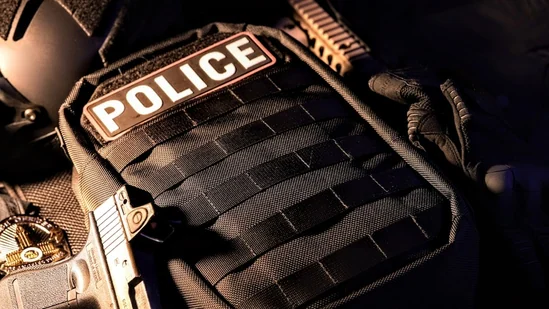The world of emergency dispatch is undergoing a dramatic transformation. While artificial intelligence is beginning to revolutionize how 911 centers handle calls, recent events like Pennsylvania's massive 911 outage serve as stark reminders of the critical infrastructure challenges that emergency services still face. This dual reality of innovation and vulnerability highlights both the promise and the pressing needs of modern emergency response systems.
AI Steps Up: Filtering Non-Emergency Calls to Save Lives
Imagine a 911 dispatcher drowning in calls – but not all of them are real emergencies. That's the daily reality for many centers. Take Utah's Weber Area Dispatch 911, for instance. They get a whopping 230,000 non-emergency calls a year compared to just 90,000 actual 911 emergencies. That's a huge ratio that eats up precious time when every second counts.
911 Dispatch Using AI
Weber Area Dispatch 911 found a brilliant answer in an AI-powered chatbot system from Motorola Solutions. It's been a game-changer, especially for those frustrating harassment campaigns that can flood phone lines.
"We had an individual that called over 250 times in a two and a half-hour time period," explains Kevin Rose, director of Weber Area Dispatch 911. Now, if someone calls from a blocked number, the AI steps in with an automated message, telling them to unblock their number or dial 911 for real emergencies.
The impact? As Rose puts it, "People, if they're calling from a blocked number, they're not going to unblock their number. They don't want us to know who they are." This simple trick has drastically cut down on nuisance calls, ensuring that true emergencies can get through without delay.
Solving Everyday Dispatch Challenges
The AI's usefulness extends far beyond just blocking harassers. Down in Alabama, Morgan County 911 was facing a different but equally annoying problem: accidental calls from cell phones that end in hang-ups.2 Given that over 80% of 911 calls now come from wireless devices, this is a huge issue nationwide.

Morgan County 911 is now using CentralSquare Technologies' Vertex NG911 Call Handling system.4 If someone hangs up, Vertex automatically sends a text asking if there's an emergency.5 If there's no reply or it's confirmed not to be an emergency, the system can even pinpoint the caller's location within feet!
"My favorite thing is, between our CAD and our Vertex, we don't have to dial numbers once a call comes into our phone system," says Samantha Sanders, a former dispatcher and now a training analyst.6 "I feel like the amount of carpal tunnel that we're cutting down on is insane."
Current Infrastructure Reality Check: Pennsylvania's 911 Outage
While these AI innovations offer a glimmer of hope, recent events remind us just how fragile our emergency response backbone can be. Pennsylvania just experienced a massive 911 outage on Friday afternoon, July 11, 2025. This left folks across all 67 counties unable to dial 911 for help.
The Pennsylvania Emergency Management Agency had to tell people to call their local police stations directly, a stark reminder that even in 2025, our emergency systems are vulnerable to widespread failures.
The Technology Gap:
This vulnerability isn't too surprising when you look at how old some of these systems are. As Lee Ann Magoski, president of NENA, put it back in June 2025: "The public expects high-tech outcomes – like the ones they see on TV, without realizing that many of us are still working with infrastructure built in the 1970s."
These decades-old systems simply weren't designed for today's world of cell phones, internet calls, and digital communication.
So, What’s the path forward?
The contrast between Utah's AI success and Pennsylvania's system crash really highlights the tough spot emergency dispatch is in. While AI and modern tech offer incredible ways to make things faster and more efficient, they have to be built on solid, up-to-date infrastructure.
Key Takeaways for Emergency Services:
- AI as a Force Multiplier: AI isn't replacing dispatchers; it's like giving them superpowers! It handles the routine stuff so they can focus on saving lives.
- Keep it User-Friendly: As Samantha Sanders from Morgan County 911 wisely points out, "When you have something that's user-friendly, it makes it more likely that someone's going to use it."
- Invest in Infrastructure: Pennsylvania's outage proves it: no amount of cool AI can fix a broken foundation.
- Think Big (and Smart): Utah's plan to roll out AI statewide shows how successful small-scale projects can be expanded.
The Future of Emergency Response
911 dispatch is at a crossroads. While AI is revolutionizing emergency response by filtering non-emergency calls and streamlining operations (e.g., Utah's chatbot, Alabama's hang-up texts), aging infrastructure remains a critical challenge.
The recent statewide 911 outage in Pennsylvania highlights this vulnerability. For millions, direct calls to local police were the only option.
The future of emergency services demands a dual focus: investing in both innovative AI solutions and robust, modern infrastructure to ensure reliable and efficient public safety.





